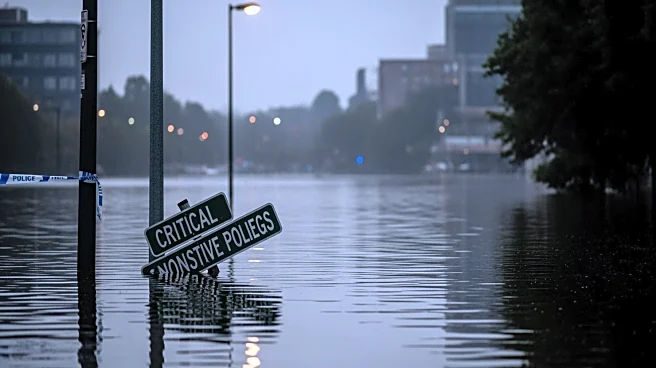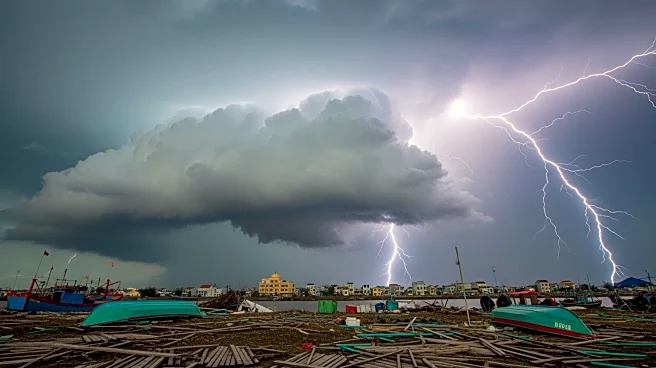What's Happening?
Newcastle, County Down, is experiencing its worst flooding in 40 years, with heavy rainfall causing significant disruption. Residents are using sandbags to protect their homes, and a hiker was rescued from the Mourne Mountains after being cut off by swollen
rivers. The flooding, exacerbated by a high tide, has made roads impassable, with stones and gravel washed down from the mountains. The Department for Infrastructure has deployed 500 sandbags and is working to clear debris. Local councillors and community members are actively involved in efforts to mitigate the impact, with many residents unable to leave their homes due to the high water levels.
Why It's Important?
The flooding in Newcastle highlights the vulnerability of certain areas to extreme weather events, which are becoming more frequent due to climate change. The immediate impact is on the local community, with potential long-term implications for infrastructure and housing. The situation underscores the need for improved water management systems and emergency preparedness. The response from local authorities and the community demonstrates resilience, but also points to the challenges faced in protecting homes and ensuring safety during such events. The economic impact could be significant, affecting property values and local businesses.
What's Next?
As the weather warning has been extended, continued efforts to manage the flooding are expected. Authorities will likely assess the damage and consider long-term solutions to prevent future incidents. Community support and government intervention will be crucial in recovery efforts. The situation may prompt discussions on infrastructure investment and climate adaptation strategies. Monitoring of weather patterns and proactive measures will be essential to mitigate similar events in the future.
Beyond the Headlines
The flooding raises questions about urban planning and the capacity of existing drainage systems to handle extreme weather. It also highlights the importance of community solidarity in crisis situations. The event may lead to increased advocacy for climate action and infrastructure resilience. The role of local government in disaster response and the effectiveness of current policies will likely be scrutinized.















